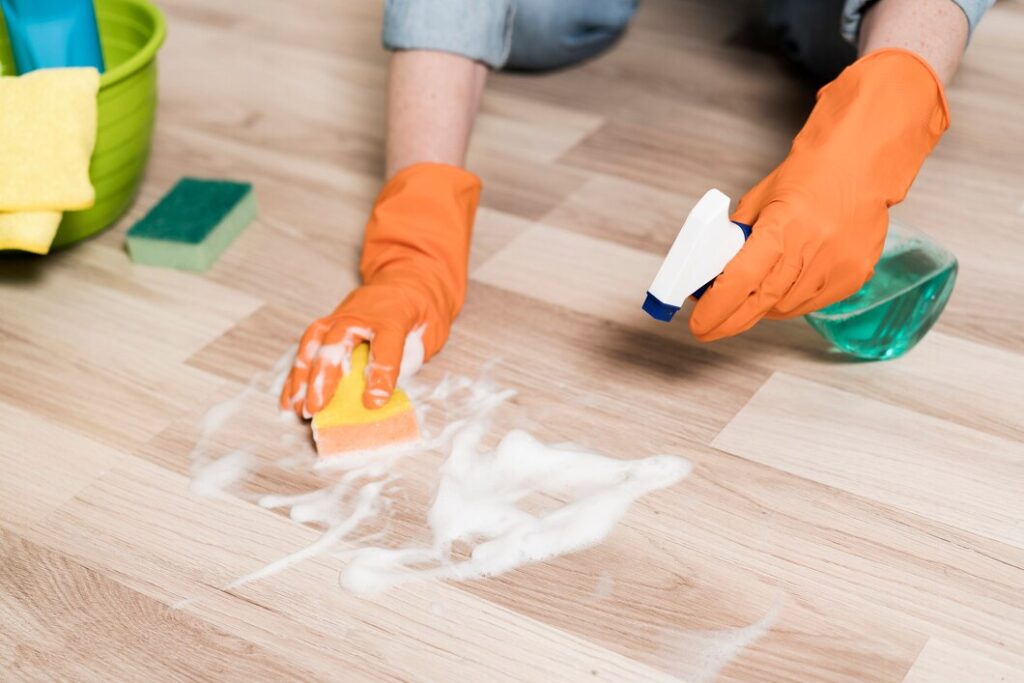Travertine is a beautiful, eternal, natural stone often used for floors, countertops, and other surfaces. This stone has an elegant look and unique texture, bringing sophistication to any home or commercial space. Like all the other natural stones, travertine needs proper care and maintenance to look the best. If it doesn’t get attention properly, the stone can become dull, scratched, or stained with time. Fortunately, the right techniques can easily keep your travertine surfaces pristine and protected for years.
You can consult Travertine cleaning and sealing services. Regular cleaning is one of the most important steps in maintaining travertine surfaces. Unlike some other flooring materials, travertine is porous and can absorb moisture and stains if not properly cleaned and sealed. A few simple steps can maintain its beauty while ensuring its longevity.
Regular Cleaning is Key
- Clean the travertine surfaces frequently because debris, dust, and other particles can cause scratches and dulling of the finish. First, remove dirt and debris from your travertine flooring and sweep or vacuum them frequently.
- Make use of a soft-bristle brush or a brush attachment for your vacuum. A vacuum with a beater bar should not be used since it may produce scratches.
- Use a stone cleanser with a pH balance for more thorough cleaning. Selecting a cleaner, especially for natural stone surfaces, is crucial since harsh chemicals can harm the stone and remove its beautiful sheen.
Address Stains Immediately
- Staining is a frequent issue with travertine. Because of its porosity, liquids can be absorbed by it if they are left on the surface for an extended period. Spills should be cleaned immediately, and the liquid should be soaked with a soft cloth.
- You can still try applying a poultice, which is a substance that helps remove stains from stone if the spill has already dried up and left a stain behind. Although poultices are made professionally, you may make one at home by combining water and mild abrasive powder to form a paste.
- The specialized grease- or oil-removing poultice is typically applied to oil-based stains.
Sealing Your Travertine
- Sealing is one of the most crucial stone care procedures to keep your travertine surfaces safe and clean. Sealing serves as a barrier to keep moisture, grime, and stains from soaking into the stone. An excellent stone sealer coats the surface in a protective layer, making cleaning and damage prevention easier.
- Depending on usage and the type of sealer used, you need to re-seal your travertine surfaces once installed, usually every one to two years.
Avoid Harsh Cleaners and Scratching Agents
- As a sensitive material, travertine is readily harmed by abrasive cleaning agents or harsh chemicals. Steel wool, rough sponges, and abrasive scrub brushes can scrape the surface and create lasting stains, so stay away from them. Instead, clean your travertine surfaces using a mop or a soft microfiber cloth. To prevent any negative reactions, ensure the cleaning chemicals you choose are made especially for natural stone.
Conclusion
One of the most exquisite natural stones that may add elegance to any area is travertine, but maintaining its best state requires regular maintenance. To keep your travertine surfaces immaculate and safe, seal them, clean them frequently, remove stains immediately, and use the proper cleaning equipment.
If you’re unsure how to maintain your travertine, consider professional travertine cleaning and sealing services to ensure your stone stays beautiful and durable for many years. The homesite surfaces will enhance your home’s elegance and value’ continued luster with a little care.






